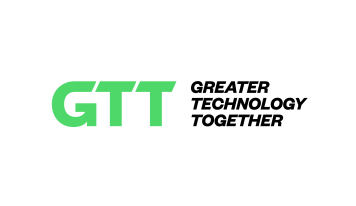Is PhoneGnome from Televolution the ultimate CLEC 2.0 Enabler?
We know the story all too well. Thousands of CLECs backed by the venture capital market flooded the telecom space in the hopes of all becoming the next AT&T. The goal back in the late nineties was to roll out fiber as fast as possible with no regard for getting any customers.
If you remember, at the time, the stock market didn’t even value profit… It was all about eyeballs, miles of fiber and potential for future profit. Profit was an “evil” word as it allowed markets to place a valuation on your company. Many former CLEC heads tell me they wanted to focus more on customer acquisition and their investors directed them to focus on digging up asphalt as a place to lay glass and not revenue generation.
To make matters worse, the ILECs were throwing up roadblock after roadblock making it difficult for DSL providers and CLECs to sell their services over ILEC controlled pipes.
We know how the story ends. The market crashed, investors panicked and few CLECs had any customers and many went belly up.
Today the cable companies are the most formidable competitors to the ILECs. Still, we generally don’t expect the cable and phone companies to be leaders in rolling out new services. These larger companies are generally behind the curve when it comes to experimenting with new applications.
Remember, Vonage was the first major telephone service provider with a soft client. Vonage did not invent the soft client mind you; they just decided they wanted to be among the first ITSPs to distribute them to their customers.
Large service providers know they are slower to move than smaller companies and the promise of IMS is all about allowing telephone company partners to develop new network services on the cheap allowing the partner and telco to share in the profits.
Is this a good strategy? Absolutely. Will IMS be deployed globally overnight? Absolutely not.
In the mean time, there are a few solutions which allow application developers to deploy advanced telephony applications with little investment and with great potential.
One such solution is a CPE box called PhoneGnome. Made by Televolutionthe deviceis an advanced ATA with an API allowing applications to be rolled out on what has to be the most granular and targeted basis possible. You could provide service to one person on each street in the world and your deployment would be cost effective.
The box costs $30-$60 depending on volume and can be the easiest way in the world to provide advanced telephony service to customers on anyone’s broadband or phone network.
The benefit of this approach is application fine-tuning is a cinch. You can revise, refine, retune or redo your application development for just the cost of the developer. You don’t need any traditional and high-priced telco equipment.
In fact the absence of equipment in this model means developers can be of the software-only variety meaning access to many more programmers worldwide. One application already running on PhoneGnome is Dial Tone 2.0 where the dial tone you hear is replaced by a TellMe application asking you for or a contact or business name to call. Speech recognition and ensuing behind the scenes technical magic connects you with the party you want to call.
You could also develop a smart forwarding application like GrandCentral or virtually anything else. Years ago I wrote an article about if Google got into telephony they could provide an application which does a Google search on an incoming phone number. With tabbed browsing you could have a tab come up with a search for the number in the yellow pages, another search on the Better Business Bureau site and so on.
This sort of application can be built by anyone now. There are a variety of similar telephony mashups you can come up with in fact. You could develop an application which displays a map with the city and even address of the person calling you.
Call detail comes in via XML and at that point you can do whatever you want with the call. You could have it gracefully forward to voicemail or forwarded to an assistant or to your cell phone.
The potential here is quite staggering as the PhoneGnome devices sit in a home and can determine how long a household uses a phone. The device can establish identity trust via the phone company with a side benefit being built-in security.
Additionally there is the potential to correlate web and phone behavior. In the past I have written about how service providers can start making money by selling aggregate telephone data. Now, any company with enough boxes out on the network can have this same ability.
So Televolution allows anyone to take advantage of the most lucrative promises of the CLEC opportunity. You can now provide the advanced services and that’s where the real money is.
Service providers could use this sort of service to break out of their traditional markets if they choose to do so. FMC for example is a natural application stemming from this solution.
The technology can sit in a phone or router or even a video game. The company has a shared revenue model and can even help with distribution of the service. They also have a mobile client with many similar features to the home-based solution.
I am pretty blown away by this technology and it has much broader implications for the deployment of advanced telephony applications. Why? Well, for the first time, anyone can roll out enhanced services without the need to wait for a service provider to green light the project.
If the project is successful and you get 100,000 subscribers, you can then shop it around to service providers as a proven business model and have them help market and sell it. I see PhoneGnome as the ultimate solution to getting telephony applications rolled out quickly and efficiently and for this reason I think it the ultimate CLEC 2.0 enabler.





